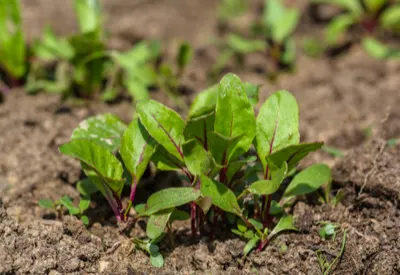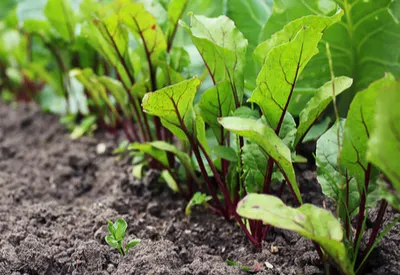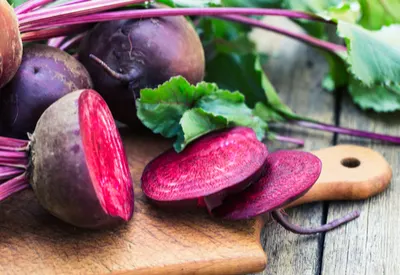What does it take to grow beets? Very little!

How To Grow Beets – Beet seedlings emerging from the ground
Beets are one of the easiest vegetables to grow in the garden. Compared to other vegetables, they excel when it comes to weather hardiness and disease resistance.
In addition they require very little maintenance during the growing season. There is not even the need to start seeds indoors.
Simply place in the soil, and in less than 2 months, you are ready to harvest!
And are they ever healthy! Beets are high in vitamin C, and contain potassium and manganese, which are great for everything from boosting your immune system to helping bones, muscles and your kidney, liver and pancreas.
Additionally, beets are also an excellent source of fiber!
How To Grow Beets – Planting
Beets should be planted from seed, directly into the garden.
They are tolerant to cold temperatures so they are one of the first vegetables that can be planted in early spring.
Plant seeds directly in the ground several weeks before your last frost date.
Interestingly, each beet ‘seed’ is a cluster of 2 to 4 seeds encased in a hard exterior shell.
Because this outer coat must soften to allow the interior seeds to germinate, it may take up to 7-10 days before sprouts emerge from the soil.
Beets, like most vegetables, prefer to be planted in areas of full sun.
They require about one inch of water per week after the seedlings emerge from the ground.
In order to allow for adequate germination, the soil must maintain a consistent level of moisture.
You want the soil damp, but not drenched in water. Seed Links : Detroit Dark Red Seeds – Rainbow Mix Seeds
How To Grow Beets – Tips After Planting
Once seeds begin to germinate, you will need to thin out extra seedlings that are too close to each other. I
f not, it will inhibit the growth. When the seedlings begin to sprout thin them to every 4-5 inches so that they can grow large enough so that they don’t become intertwined with each other.

How To Grow Beets : The leaves of beets will continue to grow upward, and need no additional support.
As they grow, there is no need to stake or prune beets.
They are able to stabilize themselves in a stable upright position as the leaves begin to grow upward and the bulb expands below the soil’s surface.
You can harvest the beets at any time. Some people prefer to eat baby beets where both the greens and small tender bulbs that are about an inch in diameter are consumed.
However, the most common way to harvest is when the bulb of the beet is 4-5 inches in diameter. This will typically take 6-8 weeks from planting to reach full maturity.
You can replant beet seeds in midsummer for a fall crop. The beets can tolerate temperatures below the freezing point for short periods of time.
If desired, extend the growing season late into fall by using row covers to prevent the harsh temperatures from destroying the roots.
HOW TO STORE BEETS
To store beets trim off the leaves, keeping a 1″ of the stem above the bulb.
If there are large chunks of soil, gently brush it off, making sure not to injure the skin of the beet. Store in a sealed plastic bag, with the air removed, for up to 3 weeks in your refrigerator crisper drawer.
If you are lucky enough to have a root cellar, place the beets in a plastic container filled with sawdust, sand or peat moss that is continually damp. Close the lid and store in these conditions for up to 3 months.
Of course, you can also freeze, can or pickle your beets for longer term storage. For more on growing all kinds of vegetables, check out our vegetable tab on the site : Vegetable Growing Tips
Contribute Your Tip or Garden Story…
Have a gardening story or tip you would like to share? Well what is holding you back? Send it in today and you could be our next featured guest gardener on This Is My Garden!
Use the “Feature My Garden Tip” button at the top of the website to submit your entry. Or, email us today at info@thisismygarden.com to share! This article may contain affiliate links.

